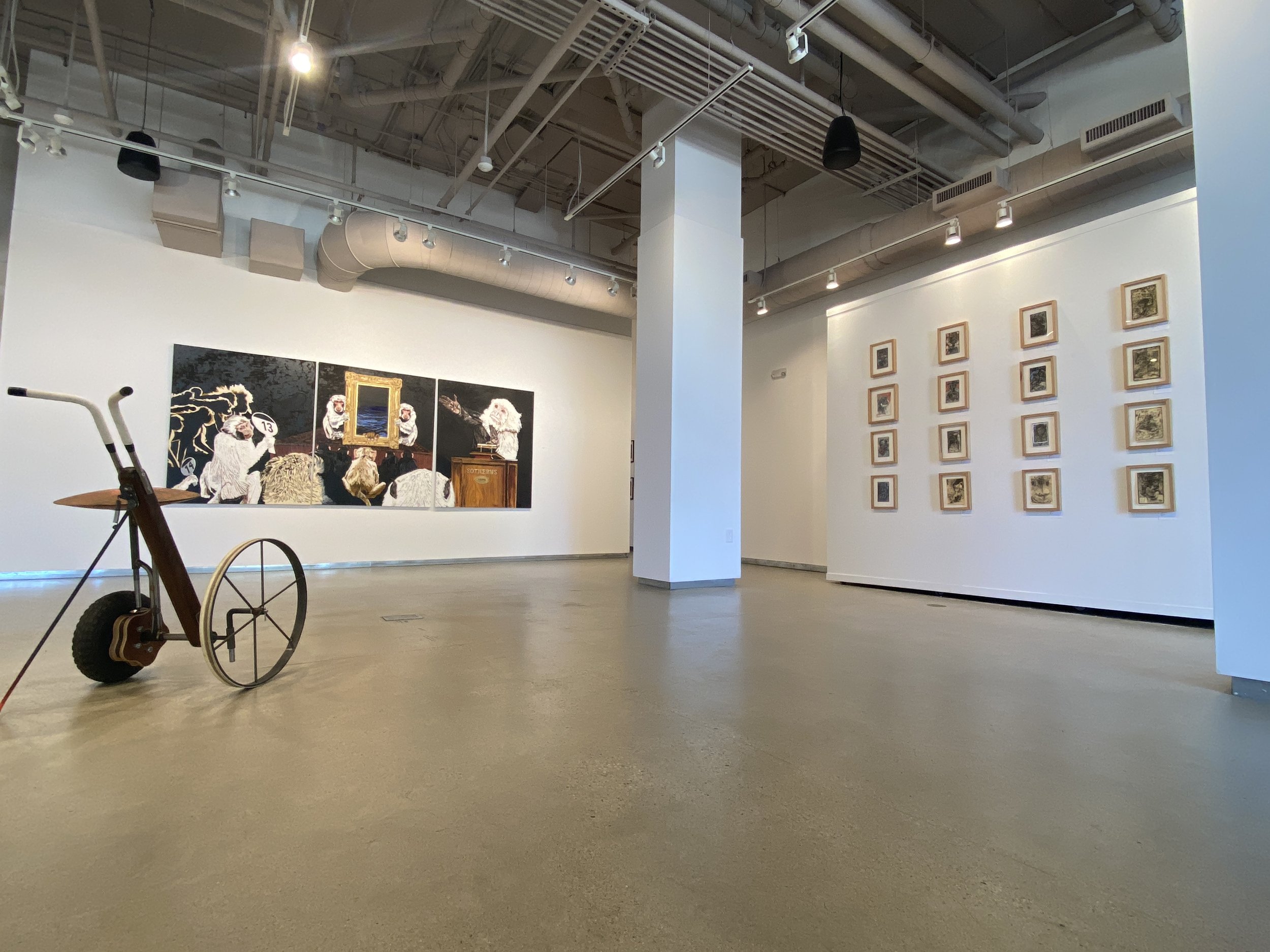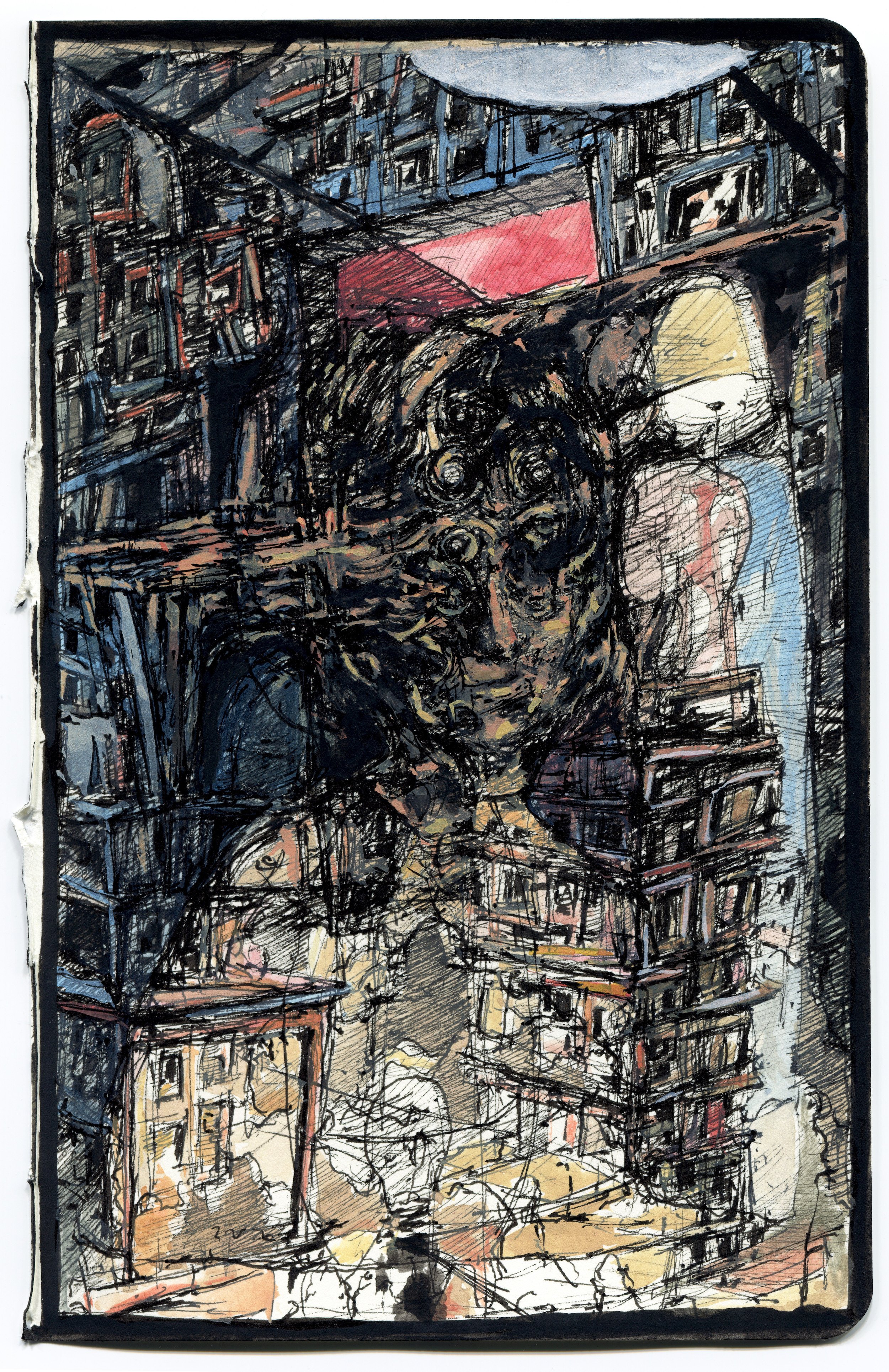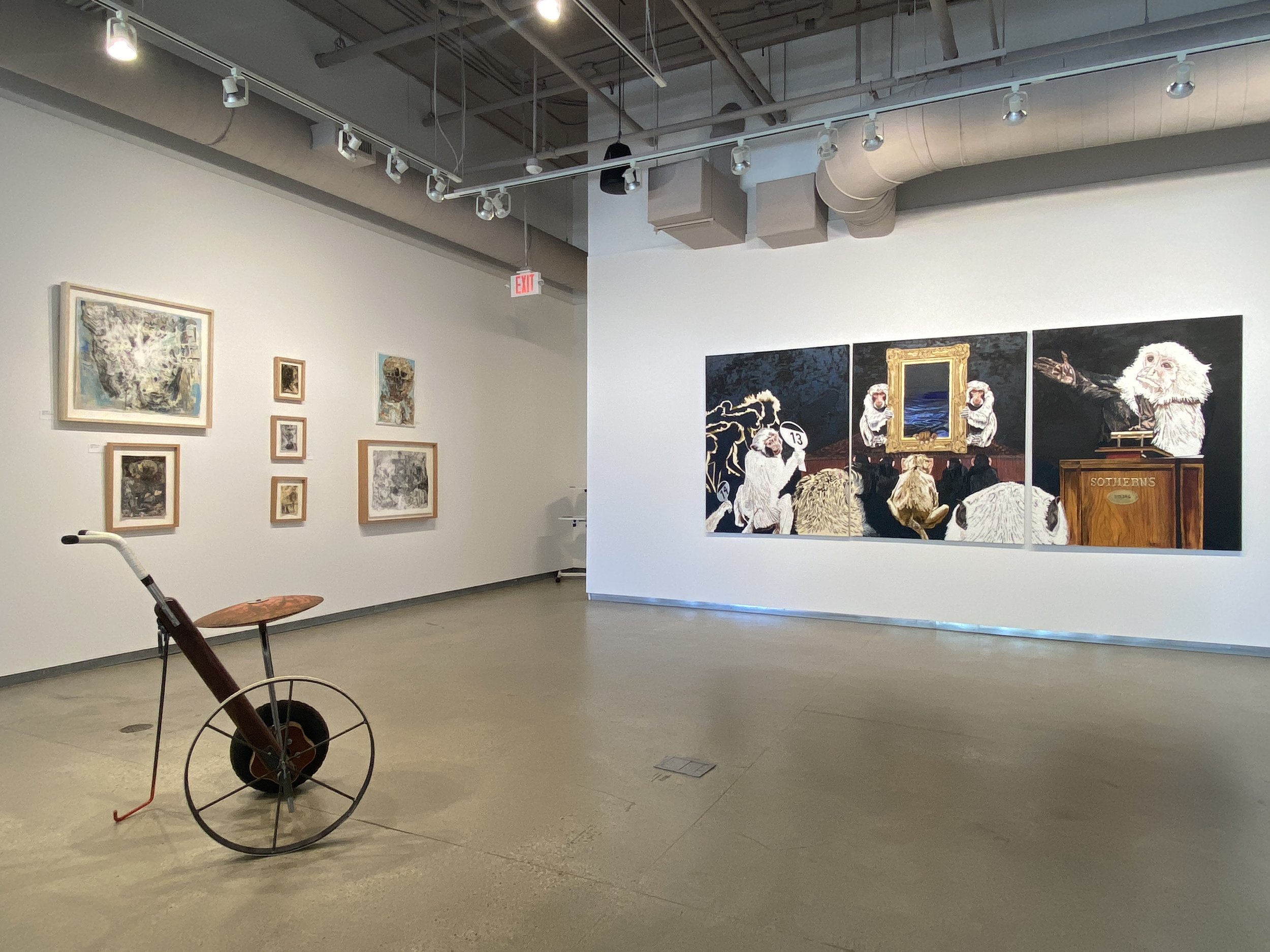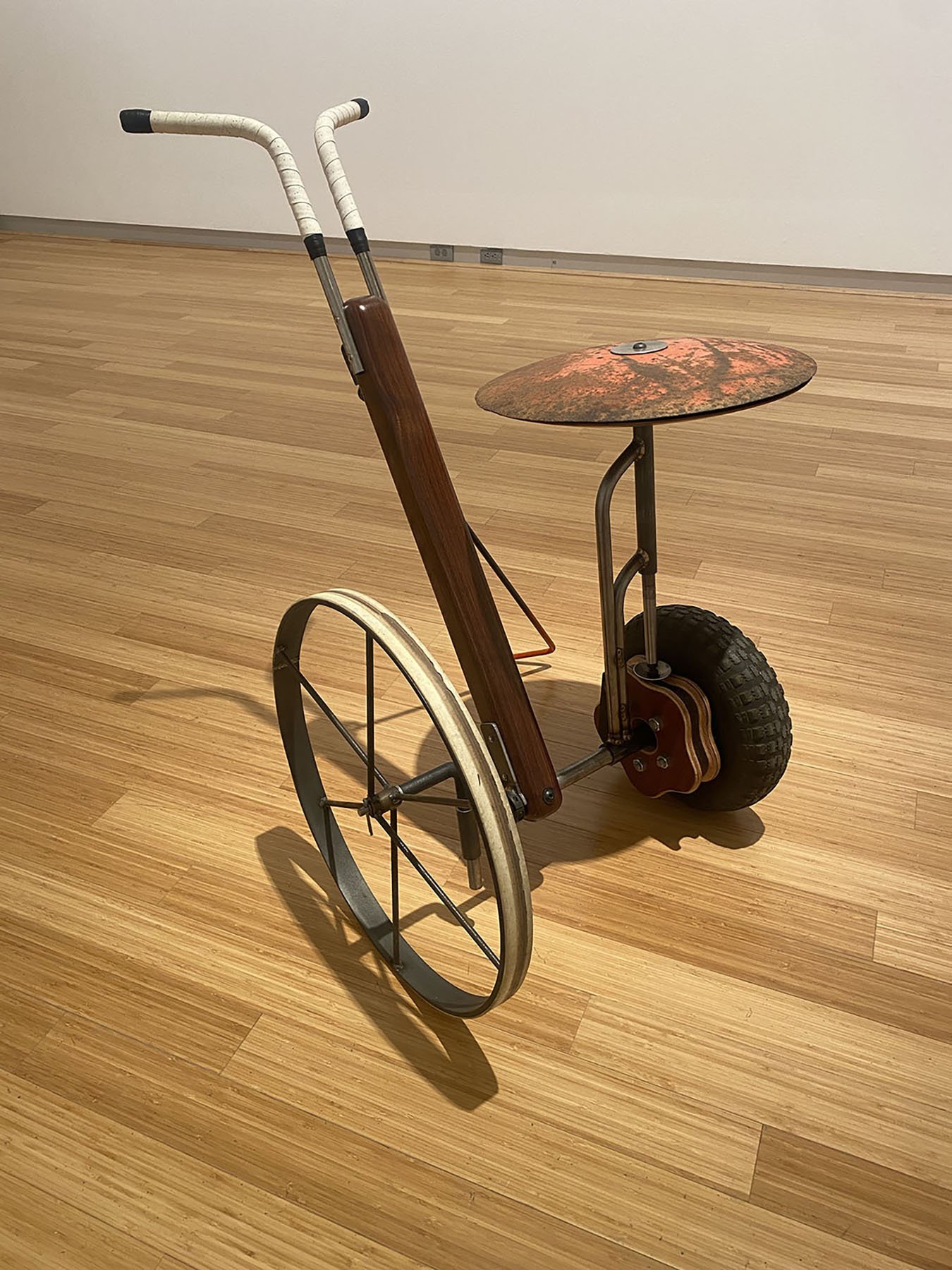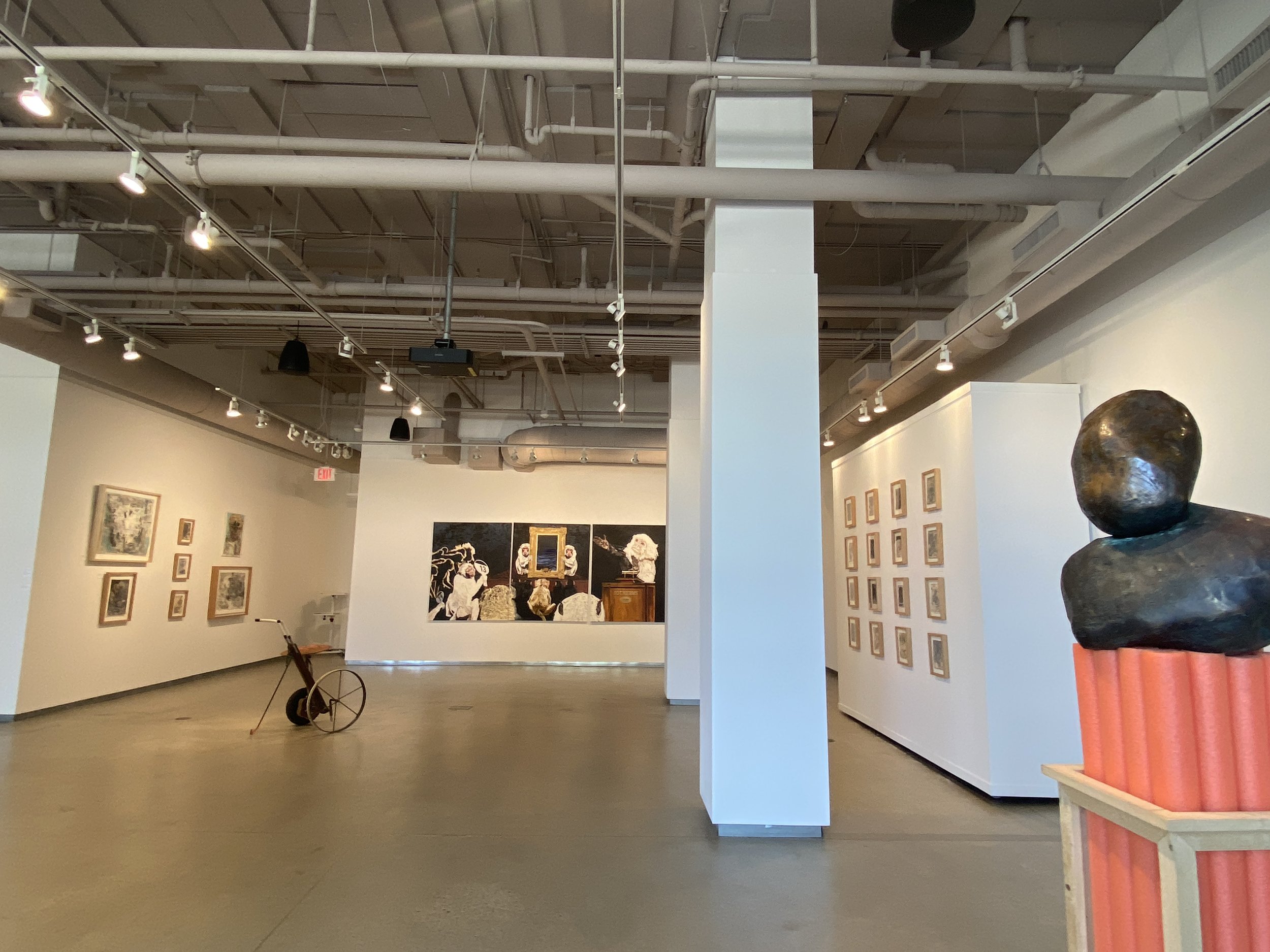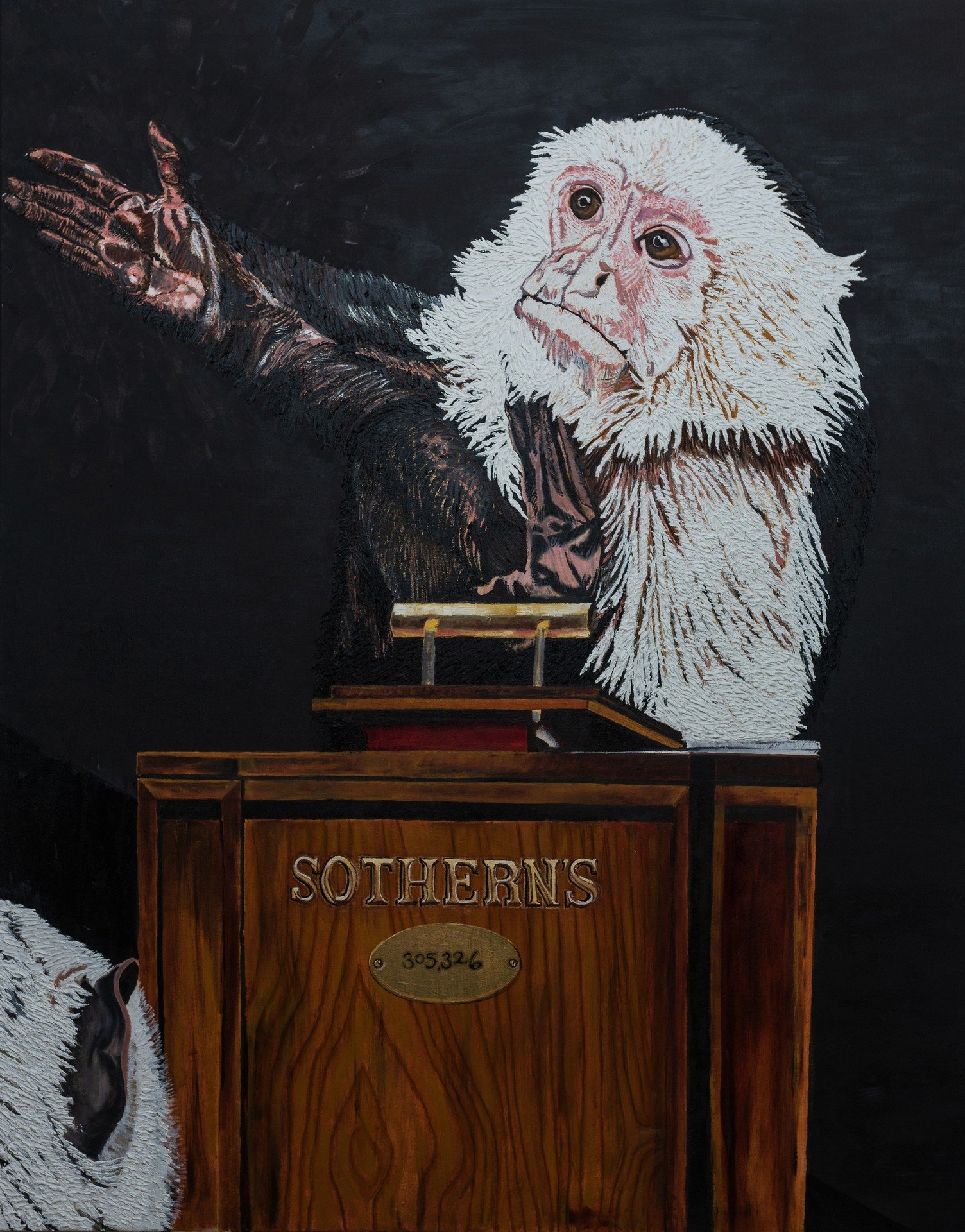ROY presents: Alejandro Bellizzi, Jared Cru Smith, Michael A. Coppage
Alejandro Bellizzi
How To Live With Your Heart Turned Off
I’m an interdisciplinary artist grounded by sketchbooks. I fill them with drawings, usually a combination of ink, graphite and gouache, but I also write poetry, to-do-lists, everything. I design concepts for absurd sculptures that I will construct from wood. Sketchbooks balance creativity with pragmatism, art with life itself. From here I explore dreams, dysfunction, and a deeper sense of wonder that compels one to go on living. I am just trying to feel something, to find some meditative bliss in recreating the apparitions that form in my mind, taking shape in the shadows of my bedroom. It’s as though I aim to validate myself by rendering my imagination, to prove that one’s internal, unseen moments of sorrow and awe don’t simply vanish from reality without any purpose or vindication. But if it does, that’s also ok.
These drawings reflect on my Father’s five year fight with cancer and my time caring for him in hospice. He died on February 20th, 2020, just before the pandemic forced everyone into isolation. He was bedridden for the last 4-5 months of his life. Consider the banality of changing your Dad’s diapers, taking his urine sample, or feeding him his pills one by one because he’s lost all motor control in his hands. It's the most meaningful thing I’ve ever done. Walking into a bathroom and sitting on a toilet is a blessing, to make a sandwich and eat it with your own two hands, play the guitar, to think clearly and know when you are home.
My main regret is that by the time I had accepted that truth and found the courage to tell my Dad he was dying, he’d lost the ability to speak. Even when he could still talk, his mind drifted in and out of delirium. He nodded in acknowledgement when I asked if he understood. I would have talked to him about the journey, about everything. I told him we would be okay, my brother and sister and I would take care of one another, and that he didn’t have to worry about letting go. More than two years later we’ve not had a funeral. There’s a desperation to surrender to the endless To-Do-List that life has become.
ROY asks
What is your name and preferred pronouns?
Alejandro Bellizzi (He, Him)
How has art (whether it be your own or art in general) changed you?
Art has given me a place in this world.
How did you start your artistic practice?
I began drawing as a small child and never stopped.
When a first-time viewer sees your work, what is the first word that you hope they think when looking at it?
Either “What”, “Whoa”, or “Hah.” Or maybe not a word but a feeling, like a sigh of relief.
Jared Cru Smith
Portraits of the Unsaid
With a sense of humor and crude aesthetic the wonderment for materials, different mediums and processes is explored to create a story out of found materials. This exploration is a way to find answers to their physical limitations. The combination of materials become abstract figurative representations to which balance, sound, and motion create portraits or spatial drawings. These structures become a way to self-reflect, a thought process difficult to bring to verbal terms but instead communicated through physical form. Numbers are used to identify each form to preserve the ambiguity of these connections. Cycles of materials and thoughts become a demonstration of my processes put into each study, and this alone breathes life into these forms.
ROY asks
What is your name and preferred pronouns?
Jared Cru Smith (He, Him)
How has art (whether it be your own or art in general) changed you?
Art has given me a place to express my own thoughts and feelings through my work as well as teach young artists how to use their own voice through making art.
How did you start your artistic practice?
It started at a young age with drawing and building forts and such. As I got older I transitioned more into three dimensional forms. That is where I live with my work now, in creating sculpture. I joke that I have been working in 3-D long enough now that I can no longer draw.
When a first-time viewer sees your work, what is the first word that you hope they think when looking at it?
“Weird”
Michael A. Coppage
American+
“Lot #13” 2020-2021: This is a three-part allegory about the parallel between the auctioning of enslaved blacks and the auctioning of artworks made by black artists. Each canvas highlighting the stages of the transaction as well as the long-term trauma the slavery experience has had on black people living today and artwork made by black artists in contemporary America.
Panel 1: The Auctioneer The auctioneer’s role is very specific and has not changed in centuries. Perched behind his podium he serves as a host and facilitator of the transaction about to take place. SOTHERNS replaces SOTHEBYS as the auction house as to give a nod to the history of slavery in the American south. The old SOTHEBYS font represents the “Old South” and the barbaric practices of the past and present.
Panel 2: The Journey This panel represents the item being auctioned. Two art handlers act as “Overseers” and stare out at the audience as they present the parcel. The painting being auctioned is a visual representation about the resilience of African Americans. Pictured is the hand of an enslaved person thrown overboard (or who jumped overboard) in route to the new world while a group of monkeys watch from their seats. He is grasping the frame of the painting attempting to survive. This serves as a visual narrative for the endurance and resiliency it has taken for black Americans to navigate the institutional barriers be it historical trauma, cultural appropriation and disenfranchisement, social distancing, stigmatization and alienation, predatory financial tactics, disproportionate legal challenges, Poor access to health care, residents of food deserts etc. The action of holding on (depicted) and weathering the storm is a practice passed down from generation to generation. It speaks to the inner strength and determination we possess as a people.
Panel 3: The Buyer The buyer acts as ”owner” and fully intends to profit from his purchase. Presently, the art buyer can shield taxable income with the purchase of a piece and stands to make more money reselling his purchase. Auction houses are largely unregulated, where the identities of buyers is a closely guarded secret, the prices of works are marked up and artists receive no percentage of the secondary and tertiary sales, no matter that they created the works now making everyone in the room rich.
The SLAVE MARKET auctioned enslaved people to plantation owners who in turn used them as labor, bred them for their stock and resold them and their offspring based on the desirable skills and abilities owners benefitted from. Each time a slave was resold a profit was made with no percentages of the transaction going towards supporting the enslaved individual.
The ART MARKET auctions paintings born of black artists labor to owners who in turn resell the paintings for a higher price than the painting originally sold for by the artist. The artist has no rights once they relinquish possession and therefore gets no percentage of future sales. There is a limited pool of black artists the art market embraces for their desirability and potential to fetch a hefty price.
ROY asks
What is your name and preferred pronouns?
Michael Coppage, He/Him
How has art (whether it be your own or art in general) changed you?
It hasn't changed me. It has empowered me.
How did you start your artistic practice?
My practice was reignited after years of international travel that included conversations and experiences that recontextualized my "place" in the world but also in the United States.
When a first-time viewer sees your work, what is the first word that you hope they think when looking at it?
Wow.

